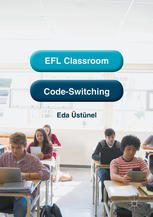

Most ebook files are in PDF format, so you can easily read them using various software such as Foxit Reader or directly on the Google Chrome browser.
Some ebook files are released by publishers in other formats such as .awz, .mobi, .epub, .fb2, etc. You may need to install specific software to read these formats on mobile/PC, such as Calibre.
Please read the tutorial at this link: https://ebookbell.com/faq
We offer FREE conversion to the popular formats you request; however, this may take some time. Therefore, right after payment, please email us, and we will try to provide the service as quickly as possible.
For some exceptional file formats or broken links (if any), please refrain from opening any disputes. Instead, email us first, and we will try to assist within a maximum of 6 hours.
EbookBell Team

4.3
28 reviewsWith emphasis on teacher and learner code-switching patterns, this book is one of the first studies to comprehensively address these issues in English as a Foreign Language (EFL) classrooms. The author examines teacher and learner code-switching through quantitative analysis, discourse analysis, conversation analysis, and mixed methods used in the study of code-switching. She addresses current debates on the amount of first language (L1) use, the functions of L1 use, the functions of teacher only code-switching patterns and the functions of teacher and learners shared code-switching patterns in foreign language classrooms. The book explores the implications of EFL classroom code-switching and how this can feed into better understanding of foreign language learning and teaching, language teacher development and new research directions in TESOL and applied linguistics. The principles and discussions of EFL classrooms are easily generalised to other language classrooms. This book will be of interest to researchers in the fields of second language acquisition, applied linguistics, and ELT, as well as researchers in the fields of sociology, education, and ethnomethodology.